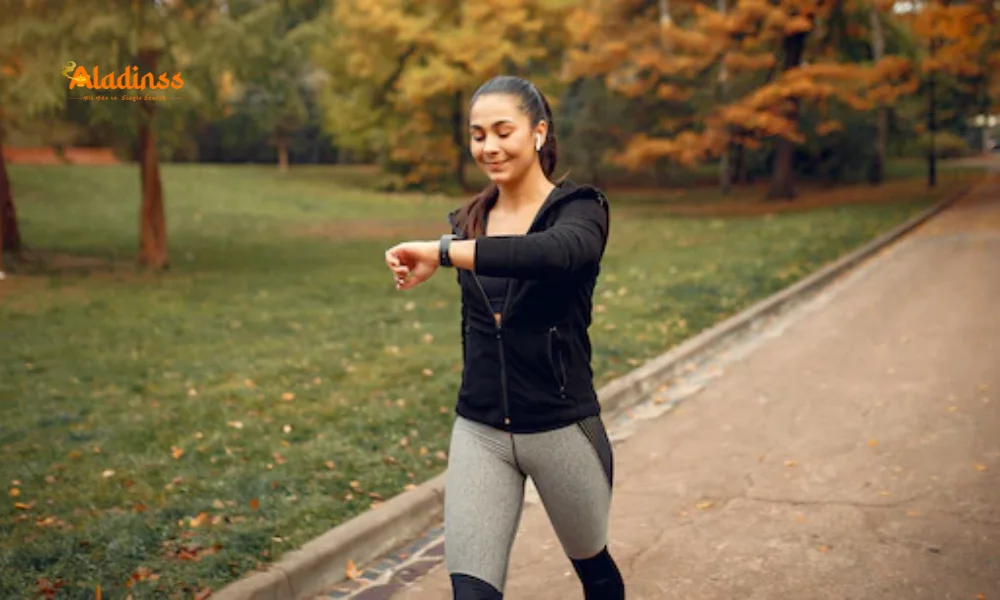Boost Your Health: Why Walking 4,000 Steps Daily Can Save You from Serious Risks

Walking 4,000 Steps a Day Boosts Health: Key Tips to Stay Safe
A recent study published on October 21, 2025, in the British Journal of Sports Medicine reveals that walking just 4,000 steps a day can significantly reduce the risk of heart disease and enhance longevity. The research, involving nearly 13,000 women up to age 72, suggests that covering 2-3 km daily, even a few days a week, offers substantial health benefits. While walking is a simple and effective exercise, ensuring proper technique and precautions is crucial to maximize its advantages. This article explores the benefits of walking and essential tips to avoid common pitfalls.
Walking is a low-impact activity that promotes cardiovascular health, improves mental well-being, and supports overall fitness. However, improper habits, such as wearing unsuitable shoes or poor posture, can lead to discomfort or injury, diminishing the benefits of this daily routine.

Health Benefits of Walking 4,000 Steps
The British Journal of Sports Medicine study highlights that walking approximately 4,000 steps daily can lower the risk of cardiovascular diseases and contribute to a longer, healthier life. Conducted with nearly 13,000 women, the research found that even moderate walking—covering 2-3 km a few times a week—yields significant health improvements. These benefits include better heart health, improved circulation, and enhanced mental clarity, making walking an accessible exercise for people of all ages.
Walking also supports weight management, strengthens bones, and boosts mood by releasing endorphins. For older adults, regular walking can improve mobility and reduce the risk of chronic conditions, reinforcing its role as a cornerstone of a healthy lifestyle.
Essential Warm-Up Before Walking
To maximize the benefits of walking and prevent injury, a brief warm-up is essential. Spending a few minutes stretching key muscle groups, such as the legs, hips, and back, prepares the body for physical activity. A proper warm-up enhances blood circulation, reduces muscle stiffness, and minimizes the risk of strains or sprains during your walk.
Hydration is equally important, as walking can lead to significant fluid loss through sweat. Drinking water before starting ensures the body remains hydrated, supporting endurance and overall comfort. Aim to consume at least a glass of water 10-15 minutes before your walk to stay energized.
Choosing the Right Footwear
The choice of footwear plays a critical role in ensuring a safe and comfortable walking experience. Wearing well-fitted, supportive shoes designed for walking prevents discomfort in the hips, joints, and back. Tight or lightweight shoes can cause blisters, pain, or even long-term injuries, undermining the benefits of walking.
Opt for shoes with adequate cushioning and arch support, and ensure they are neither too tight nor too loose. Regularly inspect your walking shoes for wear and tear, as worn-out soles can affect stability and increase the risk of injury.
Maintaining Proper Walking Posture
Correct posture is key to reaping the full benefits of walking while avoiding strain. Keep your back straight, shoulders relaxed, and head upright, avoiding the temptation to hunch or look down at your feet. Proper posture enhances breathing, reduces fatigue, and promotes efficient muscle use.
Avoid looking at your phone while walking, as it can lead to neck strain and poor posture. Walking on flat surfaces is also recommended, as uneven terrain or steep slopes can disrupt your posture and increase the risk of falls or injuries.
Arm Movement for Better Balance
The way you move your arms while walking can significantly impact your experience. Letting your arms hang loosely or clenching your fists can strain your shoulders and reduce efficiency. Instead, swing your arms naturally, keeping them slightly bent, to engage the shoulder blades and maintain balance.
This arm movement not only enhances stability but also increases calorie burn, making your walk more effective. Practicing mindful arm swings can also improve coordination and make walking feel more natural and refreshing.
Pacing Your Walking Routine
Walking at a moderate, steady pace is ideal for most people, as walking too fast or too slow can lead to discomfort or reduced benefits. Beginners should start with shorter sessions, such as 10 minutes daily, and gradually increase to 30-40 minutes over several weeks to avoid physical strain.
Overexertion, such as attempting 40-minute walks without building endurance, can cause muscle soreness or joint pain. Listen to your body and adjust your pace and duration to ensure a sustainable and enjoyable walking routine.
Avoiding Common Walking Mistakes
To fully enjoy the benefits of walking 4,000 steps, avoid common mistakes that can hinder your progress. These include:
- Skipping warm-ups, which increases injury risk.
- Wearing improper footwear, leading to discomfort or pain.
- Maintaining poor posture, causing neck or back strain.
- Using a mobile phone while walking, which disrupts focus and posture.
- Walking on uneven surfaces, increasing the risk of falls.
- Starting with overly long sessions, leading to fatigue or injury.
By addressing these issues, you can create a safe and effective walking routine that supports long-term health and well-being.
Walking for Mental and Emotional Health
Beyond physical benefits, walking 4,000 steps a day can significantly enhance mental and emotional health. Regular walks in natural settings, such as parks or green spaces, reduce stress, anxiety, and depression. The rhythmic nature of walking promotes mindfulness, helping individuals stay present and focused.
Walking also fosters social connections when done with friends or family, boosting mood and creating a sense of community. Incorporating walking into daily routines, such as during lunch breaks or after dinner, can enhance emotional resilience and overall happiness.
Tailoring Walking to Your Lifestyle
Walking is a versatile exercise that can be adapted to fit any lifestyle. For busy individuals, breaking the 4,000 steps into smaller chunks—such as two 2,000-step walks—can make it more manageable. Urban dwellers can incorporate walking by choosing to walk to nearby destinations instead of driving, while those in suburban areas can explore local trails or parks.
Tracking steps with a pedometer or fitness app can help maintain consistency and motivation. Setting realistic goals, such as increasing weekly step counts by 500 steps, ensures gradual progress without overwhelming the body.
Long-Term Benefits and Sustainability
The study’s findings underscore that even moderate walking can yield long-term health benefits, making it a sustainable exercise option. Unlike high-intensity workouts, walking is low-impact and suitable for all fitness levels, reducing the risk of burnout or injury. Consistency is key, and integrating walking into daily routines ensures lasting benefits.
To maintain motivation, vary your walking routes, listen to music or podcasts, or join walking groups. These strategies keep the activity engaging and encourage adherence, helping you achieve the recommended 4,000 steps daily.
Walking for All Ages
The study’s inclusion of women up to age 72 highlights walking’s suitability for older adults. For seniors, walking improves balance, reduces the risk of falls, and supports joint health. Younger individuals benefit from improved cardiovascular fitness and mental clarity, making walking a universal exercise with far-reaching benefits.
Families can also make walking a group activity, fostering healthy habits across generations. Encouraging children to walk regularly instills lifelong fitness habits, while adults can use walking to manage stress and maintain physical health in a busy world.
Comment / Reply From
No comments yet. Be the first to comment!






